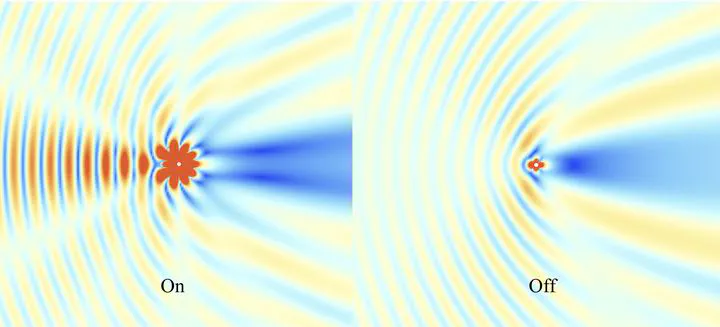Backscattering Reconfigurable Superscatterers Based on Plasma-Metasurface Structure
${}^1$School of Physics, Harbin Institute of Technology, Harbin 150001, People’s Republic of China
${}^2$Heilongjiang Provincial Key Laboratory of Plasma Physics and Application Technology, Harbin 150001, People’s Republic of China
${}^3$Heilongjiang Provincial Innovation Research Center for Plasma Physics and Application Technology, Harbin 150001, People’s Republic of China

The scattering of light is a fundamental problem in physics. As described by Rayleigh’s law of scattering, the optical response of tiny objects is usually negligible. Typically, structures with large scattering cross sections, such as corner reflectors, usually have dimensions more than the wavelength. A superscatterer is a sub-wavelength scatterer capable of exceeding the single-channel scattering limit by specific design. Superscatter-ing engineering, which optimizes the maximum scattering cross section by designing the particle structure while maintaining energy conservation and central symmetry, has been implemented experimentally in vari-ous systems such as microwave, acoustic and water waves since its introduction. Recently, various superscat-tering structures have been proposed, but the backward scattering of most of them is usually negligible, which contrasts with their significant forward scattering, thus limiting their further applications.
In previous work, we have found that with careful design, superscatterers can achieve backward scatter-ing capabilities that exceed the single-channel scattering limit. This makes it more promising for applications in radar, communications, and other fields. Superscattering originated from resonance at sub-wavelength scales, which can be achieved by engineering the dispersion of plasma’s surface waves. In this work, we combine the plasma and the metasurface to achieve superscattering and show that by tuning the electron den-sity of the plasma, the frequency at which the resonant modes appear can be altered, which in turn enables the reconfiguration of the backward scattering. The backscattering cross section of this structure can be manipu-lated over a very large range, which will pave the way for applications such as scattering feature engineering, remote sensing, etc.
Result
Conclusion
Due to the weak optical response properties of tiny objects, it is difficult to modulate light at subwavlength scales. Superscatterers exhibit strong scattering and field enhancement properties, but research into the implementation of dynamic modulation is still sparse. We find that the backward scattering of the superscatterer depends on the combination of multiple angular momentum channels, so that a broad range of tuning can be obtained with small parameter variations. Firstly, we achieve strong backward scattering of about 29 times the single-channel scattering limit by designing a plasmametaface composite structure, which is two orders of magnitude larger than the backward scattering cross section of a perfect electric conductor. Further, we show that with only finetuning of the plasma frequency, the backward scattering can be recontructed to 0.00077 $\lambda/(2\pi)$ , which is about two orders of magnitude below that of a perfect electric conductor. In conclusion, the designed subwavelength scatterer achieves a backward scattering cross-section that can be widely tuned over a range of four orders of magnitude by the plasma parameters. This potentially empowers new sub-wavelength applications such as sensing, imaging, and optical switching.